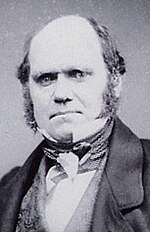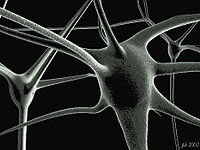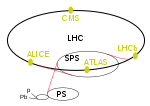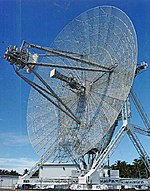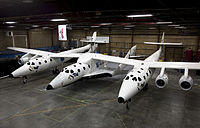Portal:Science/Featured article
WP:RECOG. See Portal:Science/Recognized content . |
Usage
The layout design for these subpages is at Portal:Science/Featured article/Layout.
- Add a new Featured article to the next available subpage.
- Update "max=" to new total for its {{Random portal component}} on the main page.
Featured articles list
Featured article 1
Portal:Science/Featured article/1
Featured article 2
Portal:Science/Featured article/2
AFeatured article 3
Portal:Science/Featured article/3
The primary scientific objectives are to characterize the global geology and morphology and map the surface composition of Pluto and Charon, and study the neutral
Featured article 4
Portal:Science/Featured article/4
AExperiments have already been carried out in which quantum computational operations were executed on a very small number of qubits. Research in practical areas continues at a frantic pace; see Quantum Information Science and Technology Roadmap for a sense of where the research is heading. Many national government and military funding agencies support quantum computing research, to develop quantum computers for both civilian and national security purposes, such as cryptanalysis.
Featured article 5
Portal:Science/Featured article/5
ABecause the quantum dot has discrete energy levels, much like an atom, they are sometimes called artificial atoms. The energy levels can be controlled by changing the size and shape of the quantum dot, and the depth of the potential. Like in atoms, the energy levels of small quantum dots can be probed by optical spectroscopy techniques. In contrast to atoms it is relatively easy to connect quantum dots by tunnel barriers to conducting leads, which allows the application of the techniques of tunneling spectroscopy for their investigation.
Featured article 6
Portal:Science/Featured article/6
Hydrogen chloride forms corrosive hydrochloric acid on contact with body tissue.
Featured article 7
Portal:Science/Featured article/7
Nanotechnology is any technology which exploits phenomena and structures that can only occur at the nanometer scale, which is the scale of several atoms and small molecules. The United States's National Nanotechnology Initiative website defines nanotechnology as "the understanding and control of matter at dimensions of roughly 1 to 100 nanometers, where unique phenomena enable novel applications."
Featured article 8
Portal:Science/Featured article/8
PTFE has the lowest
Other polymers with similar composition are known by the Teflon name: fluorinated ethylene-propylene (FEP) and perfluoroalkoxy polymer resin (PFA). They retain the useful properties of PTFE of low friction and non-reactivity, but are more easily formable. FEP is softer than PTFE and melts at 260°C; it is highly transparent and resistant to sunlight.
Featured article 9
Portal:Science/Featured article/9
Erosion is the displacement of solids (soil, mud, rock and other particles) by the agents of wind, water or ice, by downward or down-slope movement in response to gravity or by living organisms (in the case of bioerosion). Erosion is distinguished from weathering, which is the breaking down of rock and particles through processes where no movement is involved, although the two processes may be concurrent.Erosion is a natural process, but in many places it is increased by human
A certain amount of erosion is natural and, in fact, healthy for the ecosystem. For example, gravels continually move downstream in watercourses. Excessive erosion, however, can cause problems, such as receiving water sedimentation, ecosystem damage (including fish kills) and outright loss of soil.
Featured article 10
Portal:Science/Featured article/10
AMost comets are believed to originate in a cloud (the
materials may come to resemble asteroids.Featured article 11
Portal:Science/Featured article/11
AIn humans, mirror neurons are found in the inferior frontal cortex, close to Broca's area, a language region. This has led to suggestions that human language evolved from a gesture performance/understanding system implemented in mirror neurons. However, like many theories of language evolution, there is little direct evidence either way.
Featured article 12
Portal:Science/Featured article/12
Enzymes are
Featured article 13
Portal:Science/Featured article/13
AnThe three major types of atomic line filters are absorption-re-emission ALFs, Faraday filters and Voigt filters. Absorption-re-emission filters were the first type developed, and so are commonly called simply "atomic line filters"; the other two types are usually referred to specifically as "Faraday filters" or "Voigt filters". Atomic line filters use different mechanisms and designs for different applications, but the same basic strategy is always employed: by taking advantage of the narrow lines of absorption or resonance in a metallic vapor, a specific frequency of light bypasses a series of filters that block all other light.
Featured article 14
Portal:Science/Featured article/14
TheUplift of the region started about 75 million years ago in the
Featured article 15
Portal:Science/Featured article/15
The ATLAS collaboration, the group of
Featured article 16
Portal:Science/Featured article/16
The rate of DNA repair is dependent on many factors, including the cell type, the age of the cell, and the extracellular environment. A cell that has accumulated a large amount of DNA damage, or one that no longer effectively repairs damage incurred by its DNA, can enter one of three possible states: an irreversible state of dormancy, known as
Featured article 17
Portal:Science/Featured article/17
The term RADAR was coined in 1941 as an
Featured article 18
Portal:Science/Featured article/18
The Earth's average near-surface atmospheric temperature rose 0.6 ± 0.2
The increased amounts of carbon dioxide (CO2) and other greenhouse gases (GHGs) are the primary causes of the human-induced component of warming[3]. They are released by the burning of fossil fuels, land clearing and agriculture, etc. and lead to an increase in the greenhouse effect. The first speculation that a greenhouse effect might occur was by the Swedish chemist Svante Arrhenius in 1897, although it did not become a topic of popular debate until some 90 years later.
Featured article 19
Portal:Science/Featured article/19
The outermost part of the Earth's interior is made up of two layers: above is the lithosphere, comprising the crust and the rigid uppermost part of the mantle. Below the lithosphere lies the asthenosphere, which is a more viscous zone of the mantle. Although solid, the asthenosphere has very low shear strength and can flow like a liquid on geological time scales. The deeper mantle below the asthenosphere is more rigid again.
Featured article 20
Portal:Science/Featured article/20
InExtrapolated into the past, these observations show that the universe has expanded from a state in which all the matter and energy in the universe was at an immense temperature and density. Physicists do not widely agree on what happened before this, although general relativity predicts a gravitational singularity (for reporting on some of the more notable speculation on this issue, see cosmogony).
The term Big Bang is used both in a narrow sense to refer to a point in time when the observed expansion of the universe (
Featured article 21
Portal:Science/Featured article/21
Featured article 22
Portal:Science/Featured article/22
Scaled Composites' Model 339Featured article 23
Portal:Science/Featured article/23
A laser is a device that emitsA laser differs from other sources of light in that it emits light
Nominations
Feel free to add featured science articles to the above list. You also may nominate them for inclusion here.

